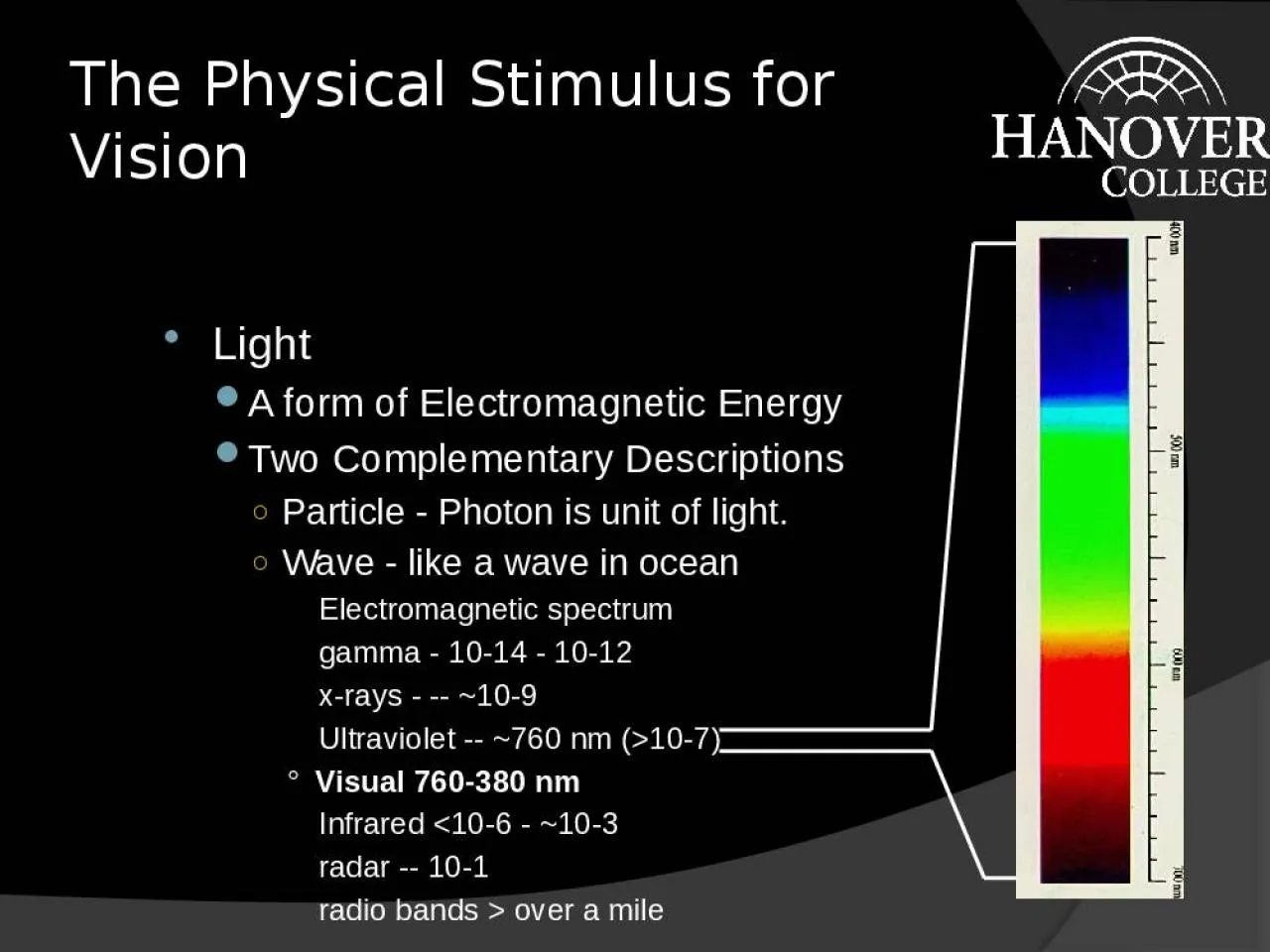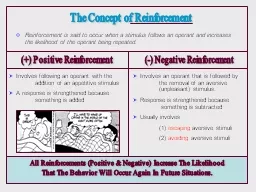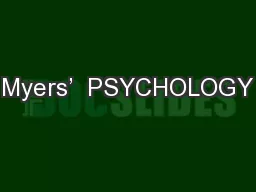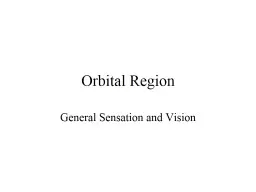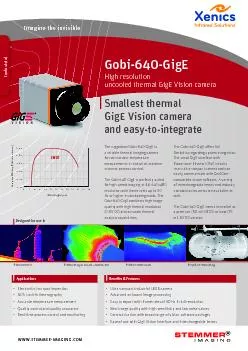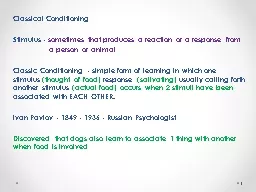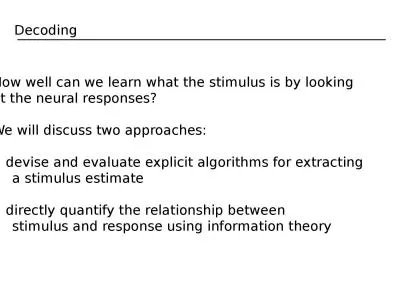PPT-The Physical Stimulus for Vision
Author : mila-milly | Published Date : 2022-05-17
Light A form of Electromagnetic Energy Two Complementary Descriptions Particle Photon is unit of light Wave like a wave in ocean Electromagnetic spectrum gamma
Presentation Embed Code
Download Presentation
Download Presentation The PPT/PDF document "The Physical Stimulus for Vision" is the property of its rightful owner. Permission is granted to download and print the materials on this website for personal, non-commercial use only, and to display it on your personal computer provided you do not modify the materials and that you retain all copyright notices contained in the materials. By downloading content from our website, you accept the terms of this agreement.
The Physical Stimulus for Vision: Transcript
Light A form of Electromagnetic Energy Two Complementary Descriptions Particle Photon is unit of light Wave like a wave in ocean Electromagnetic spectrum gamma 1014 1012 xrays 109. Sinclair Davidson. On the use of language. RMIT University © 2013. Economics, Finance and Marketing. 2. RMIT University © 2013. Economics, Finance and Marketing. 3. Adam Smith on Government. The statesman who should attempt to direct private people in what manner they ought to employ their capitals, would … assume an authority which could safely be trusted, not only to no single person, but to no council or senate whatever, and which would nowhere be so dangerous as in the hands of a many who had folly and presumption enough to fancy himself fit to exercise it. (Book IV, Chapter II). The Concept of Reinforcement. (+) Positive Reinforcement. (-) Negative Reinforcement. Involves following an operant with the addition of an appetitive stimulus . A response is strengthened because something is added. The Physical Stimulus for Vision. Light. A form of Electromagnetic Energy. Two Complementary Descriptions. Particle - Photon is unit of light.. Wave - like a wave in ocean. Electromagnetic spectrum. gamma - 10-14 - 10-12. (6th Ed). Chapter 5. . Sensation. James A. McCubbin, PhD. Clemson University. Worth Publishers. Sensation. . Sensation. a process by which our sensory receptors and nervous system receive and represent stimulus energy. La gamme de thé MORPHEE vise toute générations recherchant le sommeil paisible tant désiré et non procuré par tout types de médicaments. Essentiellement composé de feuille de morphine, ce thé vous assurera d’un rétablissement digne d’un voyage sur . Stimulus and Response Why animals and plants do what they do OR A fancy way of saying cause and effect in the animal world. Describe a situation in which you were immediately scared and/or reacted quickly to something. Write at least 1 complete sentence describing your Orbital Region General Sensation and Vision General Sensation and Orbital Region: Topic Objectives Be able to identify the four basic conditions necessary for sensation Be able to apply the characteristics of sensation to unique clinical and pathological conditions Receiver = papilla of the tongue . . transformer = taste buds . . conductor = cranial nerve VII. . Analyzer = temporal lobe . Touch . Stimulus = . pain, pressure, temperature . Receiver = . skin . Industrial Maintenance Monitoring of critical installations Waste combustion Pipeline monitoring Benefits & FeaturesUltra-compact industrial LWIR cameraAdvanced on-board image processi sometimes that produces a reaction or a response . from. a . person or animal. Classic . Conditioning - simple form of learning in which one stimulus . (thought of food). response . (salivating) . at the neural responses?. We will discuss t. wo approaches:. devise . and evaluate . explicit . algorithms for extracting. . a . stimulus . estimate. directly . quantify the relationship between. For example animals are apt to change their location.. Plants, which are rooted in one place, change their growth pattern in response to a stimulus.. The first step toward a response is . reception. . Concepts to know: . Debt vs. Deficit. Federal budget deficit – measured typically over the course of one year, a deficit occurs when the federal government’s outlays (payments) are larger than its receipts (funds paid to government).. Dr. Sonalika’s Eye Clinic provide the best Low vision aids treatment in Pune, Hadapsar, Amanora, Magarpatta, Mundhwa, Kharadi Rd, Viman Nagar, Wagholi, and Wadgaon Sheri
Download Document
Here is the link to download the presentation.
"The Physical Stimulus for Vision"The content belongs to its owner. You may download and print it for personal use, without modification, and keep all copyright notices. By downloading, you agree to these terms.
Related Documents

